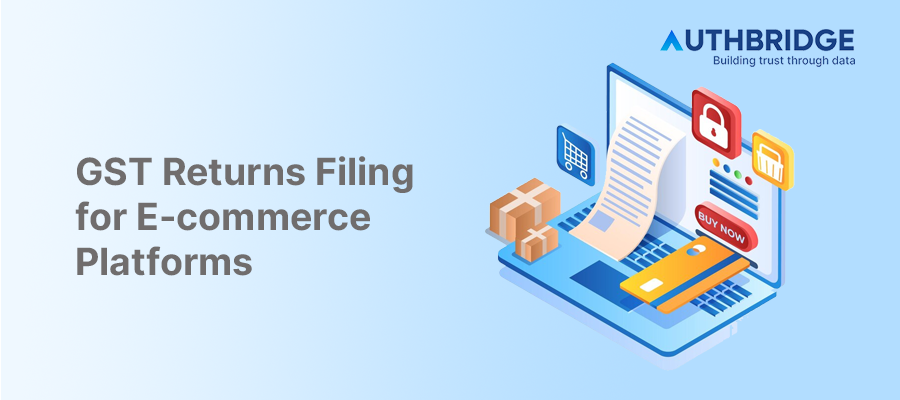Mastering GST Returns For E-commerce Businesses: A Step-by-Step Guide

The Goods and Services Tax (GST) regime in India has brought significant changes to how e-commerce platforms are taxed and how they need to comply with tax regulations. Among these changes, the requirement for e-commerce operators to file GSTR-8 returns is crucial. This guide provides a detailed overview of the GST returns filing process for e-commerce platforms, ensuring compliance with the latest tax laws.
Introduction to GSTR-8 for E-commerce Platforms
GSTR-8 is a monthly return that must be filed by e-commerce operators who are required to collect tax at source (TCS) under GST. This return includes details of all supplies made through the e-commerce platform and the TCS collected on these supplies. The due date for filing GSTR-8 is the 10th of the following month.
- Objective: The primary aim of GSTR-8 is to ensure that the tax collected at source by e-commerce operators is properly accounted for and paid to the government. It also facilitates the reconciliation of transactions between suppliers and e-commerce platforms.
Key Components of GSTR-8
GSTR-8 comprises various sections that capture detailed information about the transactions processed by e-commerce platforms:
- GSTIN: The Goods and Services Tax Identification Number of the e-commerce operator.
- Legal Name of the Registered Person: The legal name of the e-commerce platform as registered under GST.
- Details of Supplies Made: Information about all supplies made through the e-commerce platform to registered persons (B2B) and unregistered persons (B2C), including returns and net supplies.
- TCS Details: Details of the tax collected at source on behalf of suppliers, including the GST rates and the amount of TCS collected and paid.
Filing Process for GSTR-8
The filing process for GSTR-8 involves several steps that e-commerce operators need to follow diligently to ensure compliance:
- Preparation: Collect and reconcile all transaction data for the month, including sales, returns, and TCS collected.
- Filing: Log in to the GST portal and navigate to the GSTR-8 return filing section. Fill in the required details in the respective sections of the return.
- Payment: Pay any outstanding TCS liability using the Electronic Cash Ledger. It's crucial to ensure that the TCS collected is accurately reported and paid to avoid penalties.
- Submission: After verifying all the details and ensuring that the TCS liability is cleared, submit the GSTR-8 return.
Compliance and Documentation
E-commerce platforms must maintain accurate records of all transactions processed through their platform, including sales, returns, and TCS collected. These records should be readily available for verification by tax authorities if required. Proper documentation and record-keeping are essential for smooth compliance and reconciliation processes.
Challenges and Solutions
Filing GSTR-8 can present challenges, especially in terms of transaction reconciliation and error rectification. E-commerce platforms may face difficulties in matching their transaction records with the returns filed by their suppliers. To address these challenges, it's recommended to:
- Use automated accounting and GST software that can integrate with the e-commerce platform for real-time transaction tracking and reconciliation.
- Regularly communicate with suppliers to ensure that their sales data matches the platform's records.
- Utilize the GST portal's functionality to amend previously filed returns if discrepancies are found.
Future Outlook and Recommendations
The GST framework is continuously evolving, with potential changes and updates that could affect e-commerce platforms. Staying informed about the latest GST regulations and leveraging technology for compliance management are key strategies for e-commerce operators. Additionally, engaging with GST consultants and tax professionals can provide valuable insights and assistance in navigating the complexities of GST compliance.
Conclusion
GST returns filing, particularly GSTR-8, is a critical aspect of GST compliance for e-commerce platforms in India. By understanding the requirements, process, and challenges associated with GSTR-8, e-commerce operators can ensure timely and accurate compliance, thereby contributing to the smooth functioning of their business operations within the GST framework. Adapting to the digital demands of GST compliance not only aids in regulatory adherence but also enhances operational efficiency and transparency in the e-commerce sector.
Category

Abhinandan Banerjee
(Associate Manager - Marketing)
Abhinandan is a dynamic Product and Content Marketer, boasting over seven years of experience in crafting impactful marketing strategies across diverse environments. Known for his strategic insights, he propels digital growth and boosts brand visibility by transforming complex ideas into compelling content that inspires action.



